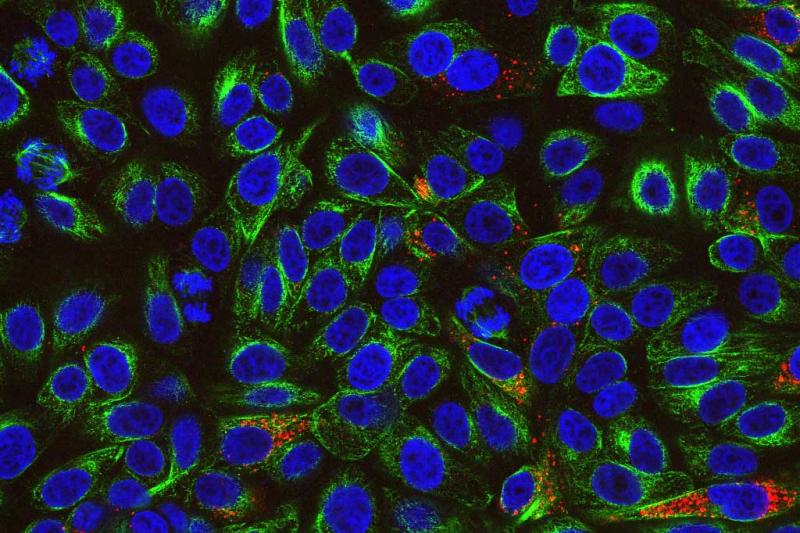



Pirbright reveals new method to study poultry virus (IBV) which could reduce the need to use birds in research
A new finding could enable researchers to study poultry virus strains, reducing the numbers of birds needed for research and vaccine production
© The Pirbright Institute
This finding could enable researchers to study strains of the poultry virus that were previously inaccessible and potentially provide alternative vaccine production methods, which currently rely on eggs, therefore reducing the numbers of birds needed for research and vaccine production.
IBV causes a highly contagious respiratory disease in poultry, which has a large economic impact on poultry industries worldwide. There are multiple strains of IBV, many of which are notoriously difficult to grow in the lab - most strains cannot be studied without using cells taken directly from a chicken or eggs. This hinders research that seeks to understand how the virus causes disease and makes it challenging to develop effective vaccines.
Studies published in the journal Viruses investigated the effects of adding the enzyme trypsin to two types of lab cell cultures (Vero and DF-1) on the growth of three IBV strains. This resulted in high levels of growth in both cultures for two of the strains (M41-CK and BeauR). After being grown in cells with trypsin multiple times, M41-CK was able to grow at low levels without the enzyme, meaning the virus may have adapted to growth in these cells. BeauR was already able to replicate in these cells, but the addition of trypsin significantly increased its growth levels.
However, the third strain, 4/91(UK), was unable to grow in either cell culture with or without the presence of trypsin. This could be due to differences in its genome which alter the strain’s proteins and prevent trypsin from acting on them. Further research into the mechanisms by which trypsin increases IBV growth is required as well as testing the enzyme’s effect on more IBV strains.
Dr Erica Bickerton, head of the Coronaviruses Group at Pirbright, said: “This study provides the first step towards establishing new IBV strains in lab cell cultures. Once optimised, this could help us to reduce the need for birds in research as well as enabling us to answer questions about these strains that are currently only possible to answer in lab cell cultures.”
“Our next steps will be to investigate whether trypsin works with other field strains and if conditions such as temperature may play a role in improving their growth. We can also look at other enzymes to see if they generate growth for 4/91(UK) in lab cell cultures. This technique progresses our efforts towards the 3Rs in animal research (Replace, Reduce, Refine) and could be applied to a number of other viruses that are difficult to grow in cells that aren’t derived from animals.”
The method may also have implications for vaccine development. Instead of growing IBV vaccine viruses in eggs, they could potentially be produced in cells, which would offer a more reliable and flexible platform for developing next generation IBV vaccines. The Vero cells used in this study are already licenced for vaccine production, and although current trypsin induced growth in these cells would not necessarily be enough to generate IBV vaccines, further optimisation could enable their use and lead to a reduction in the reliance on chicken eggs in this industry.








